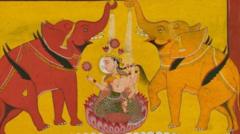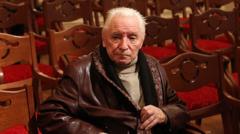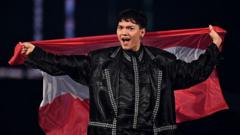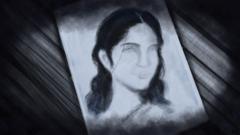For centuries, theyyam performances in Kerala have enchanted audiences by showcasing male performers as divine incarnations through elaborate ceremonies, costumes, and trance-like dances. Historian KK Gopalakrishnan documents the ritual's evolution, complexity, and cultural significance in a new book.
The Divine Transformation: Exploring the Rituals of Theyyam in Kerala
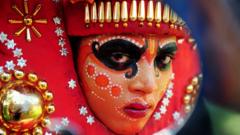
The Divine Transformation: Exploring the Rituals of Theyyam in Kerala
Theyyam, an ancient Indian ritual, melds theatricality with deep devotion, offering a glimpse into a transformative connection between humans and the divine in Kerala.
Inside the ancient Indian ritual where humans become gods
In the heart of India's Kerala state lies a complex artistic expression steeped in spirituality—known as theyyam. This remarkable folk ritual, practiced for nearly 300 years, serves both as an entrancing performance and a serious act of devotion. With roots that extend beyond the arrival of Hinduism, theyyam intricately intertwines tribal traditions with Hindu mythology and culture. Each performance showcases male performers who, through elaborate costumes, intricate face paint, and trance-inducing dances, embody divine entities.
Across the verdant landscapes of Kerala and its neighboring Karnataka, nearly a thousand theyyam rituals enliven temples and ancestral estates annually. Typically performed by men from marginalized castes and tribal communities, these performances often spotlight elaborate tales of gods and ancestral figures. Historian KK Gopalakrishnan, who has chronicled his family's enduring legacy in hosting theyyam, recently released a book titled *Theyyam: An Insider's Vision,* which delves into the respective art forms' rich mythology, devotion, and its evolution over time—including the fascinating integration of Muslim performers who have embraced this ancient practice.
The performances occur in the family courtyard of Mr. Gopalakrishnan’s ancestral Nambiar home in the Kasaragod district, where throngs gather to experience the rite. Held between November and April, generally during the post-monsoon and winter months, the theyyam festival draws attention from across Kerala, particularly Northern districts such as Kannur and Kasaragod. Each performance narrates a profound tale—whether it be the veneration of a warrior deity, honoring a deified ancestor, or paying homage to tiger spirits that symbolize strength and protection.
A ritualistic homage is paid to local deities in a nearby forest before the performance. Following an elaborate worship ceremony, known as "Goddess Spirit Invocation," the "spirit of the goddess" is drawn back to the family house, guided meticulously by the family’s senior maternal guardian, or uncle. The responsibilities, however, also extend to the women in the family, who hold significant respect and ensure the continuity of traditions, ritual preparations, and arrangements.
The performances burgeon with color and sound: boisterous chants, fiery torches, and vibrant dance interpretations. Some artists bear visible marks of their dedicated acts; burns are not uncommon in acts involving fire-walking and contact with flames, signifying purification and divine strength within the ritual. Gopalakrishnan highlights how the inclusion of fire serves both a dramatic element and a symbolic representation of the gods' dominance over nature.
Each theyyam acts as a conduit to both honor diverse deities—be it embodiments of gods, ancestral spirits, animals, or nature’s forces. One gripping representation involves performers manifesting fierce deities like the blood-drenched Raktheswari, an incarnation of Kali, who channels maternal energy and fierce protection while invoking sacred justice.
Preparing for their performances, theyyam artists meticulously piece together their elaborate costumes and apply vibrant makeup, each design telling a unique story as they transform into the divine beings. The ritualistic approach highlights their devotion and reinforces the connection between performance art and spirituality.
As elements of animism interweave with this elaborate narrative, even symbolic creatures, like the revered crocodile theyyam, appear during performances, shedding light on humanity’s deep connection with nature. These performances culminate in blessings, where devotees present their prayers before the gods, seeking solace while threading together vulnerability and devotion in the sacred space of the theyyam.





